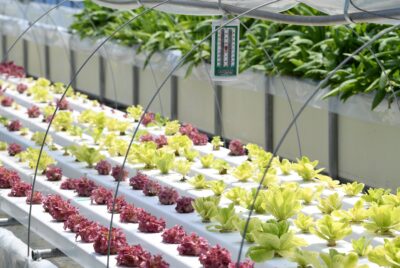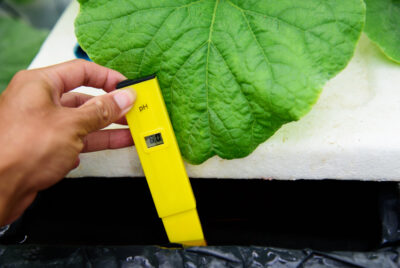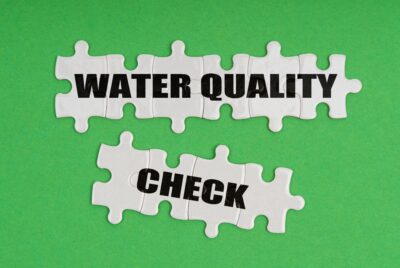Hydroponic Planter
We may earn a commision from purchases made using our links. Please see our disclosure to learn more.
Hydroponic Planter: A Revolution In Indoor Gardening.
As an enthusiast and advisor in the field of indoor gardening, I am excited to share with you the wonders of the 12 Pod Indoor Hydroponic Planter with built-in LED lights. This innovative system allows you to grow fresh herbs and vegetables right in the comfort of your home, regardless of the season.
In this article, I will guide you through the benefits of this water-based growing system, the advantages of using a 12 Pod Indoor soilless planter, and provide helpful suggestions to ensure successful cultivation.
What is a 12 Pod Indoor Hydroponic Farm?
A 12-pod indoor growing system is a self-contained gardening system that utilizes hydroponics, a method of growing plants without soil. This modern solution replaces traditional soil-based gardening with a nutrient-rich water solution that delivers essential elements directly to the plants’ roots. The planter accommodates 12 individual plant pods, allowing you to grow a variety of herbs and vegetables simultaneously. With the addition of built-in LED lights, this planter provides the perfect environment for optimal plant growth.
Benefits of Indoor Hydroponic Gardening
Firstly, it enables year-round gardening, eliminating the limitations imposed by seasonal changes. Whether it’s the dead of winter or scorching summer, you can enjoy a thriving garden in your own home. Additionally, hydroponic systems require less space compared to traditional gardens, making them ideal for urban dwellers with limited outdoor areas. Moreover, since hydroponics eliminates the need for soil, there is no risk of soil-borne diseases or pests, resulting in healthier plants.
Advantages of a 12 Pod Indoor Indoor Growing System
There are several advantages over other indoor hydroponic systems. Firstly, its compact size and design make it perfect for indoor use, fitting seamlessly into any living space. The built-in LED lights mimic natural sunlight, providing plants with the necessary light spectrum for photosynthesis. This feature is particularly beneficial in low-light environments or during the darker winter months. The system also includes a built-in watering and nutrient-delivery system, ensuring your indoor growing system receives the right amount of water and essential hydroponic fertilizer at all times.
Choosing the Right High-yield Planter
When selecting a planter, it is crucial to consider a few key factors. Firstly, assess the available space in your home and choose a planter that fits your requirements. Consider the number of plant pods you need based on your gardening goals. Look for a planter that offers adjustable LED lights, allowing you to tailor the lighting conditions to different plant growth stages. Additionally, check if the planter has a reliable water and fertilizer distribution system to simplify the maintenance process.
Setting Up Your Green Machine
Setting up your 12 Pod indoor planter is a straightforward process. Start by assembling the planter according to the manufacturer’s instructions. Then, fill the water reservoir with a hydroponic fertilizer solution specifically formulated for hydroponic gardening. Place the plant pods in their designated slots and insert the seeds or seedlings. Adjust the height of the LED lights to ensure they are positioned correctly for optimal plant growth. Finally, plug in the planter and adjust the timer settings according to the specific needs of your plants.
Essential Hydroponic Fertilizer for Indoor Hydroponic Gardening
In indoor gardening, providing the right fertilizer is crucial for robust plant growth. The most important hydroponic fertilizers include nitrogen, phosphorus, potassium, calcium, and magnesium. These essential elements can be obtained through specialized fertilizer solutions available in the market. Follow the manufacturer’s instructions to mix the fertilizer solution at the appropriate concentration and regularly monitor the pH levels to maintain a suitable environment for your plants.
Understanding LED Lights for Indoor Hydroponic Gardening
LED lights play a vital role in indoor hydroponic gardening, as they serve as the primary light source for plants. LED technology offers several advantages, including energy efficiency and the ability to emit specific light wavelengths suitable for photosynthesis. Different stages of plant growth require specific light wavelengths, such as blue light for vegetative growth and red light for flowering and fruiting stages.
How to Maintain Your High-yield Planter
Proper maintenance is key to the success of your planter. Regularly monitor the water levels and hydroponic fertilizer solution in the reservoir, ensuring they remain within the recommended range. Check the pH levels weekly and make adjustments as necessary. Inspect the plants for any signs of nutrient deficiencies or pests, and address them promptly. Clean the planter regularly to prevent the buildup of algae or bacteria. By maintaining optimal conditions, you will ensure healthy and vibrant plant growth.
Common Mistakes to Avoid in Indoor Hydroponic Gardening
While indoor hydroponic gardening is relatively easy, there are some common mistakes to avoid. One of the most frequent errors is over or underfeeding the plants. Follow the recommended hydroponic fertilizer dosage and monitor the plants’ response. Overcrowding the plant pods can also hinder growth, so ensure sufficient space between each plant. Inadequate lighting or improper light spectrum can lead to weak or stunted plants, so pay attention to the LED light settings. Lastly, neglecting regular maintenance and inspections can result in preventable issues, so establish a routine and stick to it.
Troubleshooting Tips
Sometimes, despite your best efforts, challenges may arise in your indoor hydroponic garden. Here are a few troubleshooting tips to help you overcome common issues. If you notice slow plant growth, adjust the fertilizer solution concentration or pH levels. If plants are wilting, check the water levels and ensure they are receiving enough moisture. Yellowing leaves may indicate hydroponic fertilizer deficiencies, so adjust the solution accordingly. If you encounter pests, consider using organic pest control methods to minimize the impact on your plants.
Harvesting and Enjoying Your Indoor Hydroponic Garden
The joy of indoor hydroponic gardening culminates in the bountiful harvest of fresh herbs and vegetables. Once your plants have reached maturity, carefully harvest the produce using sharp, clean tools. Harvesting encourages new growth, so continue to enjoy a continuous supply of fresh, homegrown goodness. Incorporate your harvest into delicious meals, and salads, or even create flavorful herbal teas. There’s nothing quite like the satisfaction of tasting the fruits of your labor and knowing you’ve nurtured them from seed to plate.
Conclusion
In conclusion, this 12 Pod indoor green machine with built-in LED lights revolutionizes indoor gardening, providing plant enthusiasts with a convenient and efficient way to grow fresh herbs and vegetables year-round. Its compact design, adjustable LED lights, and automated watering system make it an ideal choice for both beginners and experienced gardeners. By choosing the right planter, setting it up correctly, providing essential hydroponic fertilizer, and maintaining optimal conditions, you can create a thriving indoor hydroponic garden that will enhance your home and culinary experiences. The best thing about this is you don’t need any special hydroponic instruments or controllers.
FAQ’s
How much space do I need for my indoor farm?
The space required is relatively minimal. It can fit comfortably on a countertop, table, or even a dedicated shelf. Ensure there is enough space for the planter’s dimensions and leave room for easy access and maintenance.
Can I grow different plants in a high-yield planter?
Absolutely! The indoor mini farm is designed to accommodate a variety of plants simultaneously. You can grow a mix of herbs, leafy greens, and even small vegetables within the planter’s pods, providing a diverse and fresh harvest.
How often should I check the water and hydroponic fertilizer levels in the reservoir?
It’s essential to regularly monitor the water and hydroponic fertilizer levels in the reservoir. Aim to check them at least once a week, adjusting as necessary. Maintaining the proper levels ensures your plants have a consistent supply of water and essential fertilizer for optimal growth.
Are LED lights the best option for indoor hydroponic gardening?
LED lights are highly recommended due to their energy efficiency and ability to emit specific light wavelengths essential for plant growth. They provide the right light spectrum for photosynthesis and allow you to customize the lighting conditions for different growth stages.
Can I reuse the plant pods in my indoor growing system?
Yes, the plant pods in your indoor farm can be reused. Once you have harvested your plants, carefully clean the pods and remove any remaining roots or debris. You can then use them again for future plantings, making the most of your planters and reducing waste.





Comments are closed.